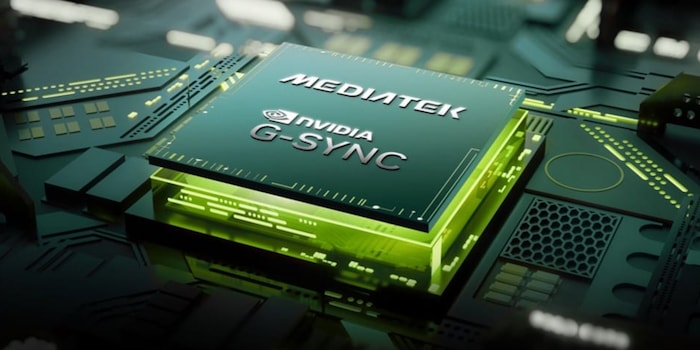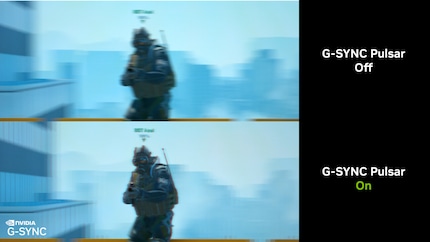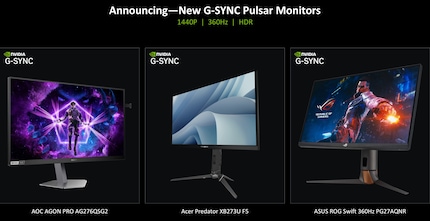
Nvidia G-Sync no longer needs a proprietary module
Monitors with new MediaTek chips support all Nvidia G-Sync functions. This makes the expensive and therefore almost extinct "G-Sync Ultimate" superfluous.
In future, monitors will no longer need a proprietary hardware module from Nvidia to utilise all the functions of G-Sync. Nvidia has announced a collaboration with MediaTek https://blogs.nvidia.com/blog/mediatek-g-sync-displays/. Displays with new MediaTek scalers will be able to access all G-Sync functions:
- Variable refresh rates
- Variable overdrive
- 12 bit colours
- Ultra Low Motion Blur (ULMB)
- Low Latency HDR
- Reflex Analyser
- Pulsar
MediaTek chips are widely used in the monitor world. With this collaboration, Nvidia should significantly increase the reach of its G-Sync technologies in the medium term. Although many screens have been "G-Sync Compatible" since 2019, they are not certified for "G-Sync Ultimate".
For the latter, monitor manufacturers have to install a special hardware module. It drives up the product price, requires active cooling and does not support HDMI 2.1, which is why the module has hardly been seen recently - to the dismay of many fans of the technology.
Many functions so far only with Ultimate
"G-Sync Compatible" monitors support variable refresh rates. However, other functions were only available with "G-Sync Ultimate". For example, the "Reflex Analyser" for measuring latency or "Ultra Low Motion Blur" (ULMB) for reducing motion blur.
The new "Pulsar" was also previously reserved for Ultimate monitors. It allows the use of ULMB together with a variable refresh rate to avoid screen tearing. Previously, the two technologies were mutually exclusive, which is why ULMB was rarely used in practice. This also applies to equivalent technologies from other suppliers, such as Asus' "Extreme Low Motion Blur".

Source: Nvidia
First three compatible monitors announced
The first three monitors with the new MediaTek scaler are the Asus ROG Swift 360Hz PG27AQNR, the AOC Agon Pro AG276QSG2 and Acer's Predator XB273U F5. All three have a resolution of 1440p and a frame rate of 360 hertz. Screens with previous MediaTek chips cannot be made compatible via a software update.

Source: Nvidia
My fingerprint often changes so drastically that my MacBook doesn't recognise it anymore. The reason? If I'm not clinging to a monitor or camera, I'm probably clinging to a rockface by the tips of my fingers.
From the latest iPhone to the return of 80s fashion. The editorial team will help you make sense of it all.
Show all